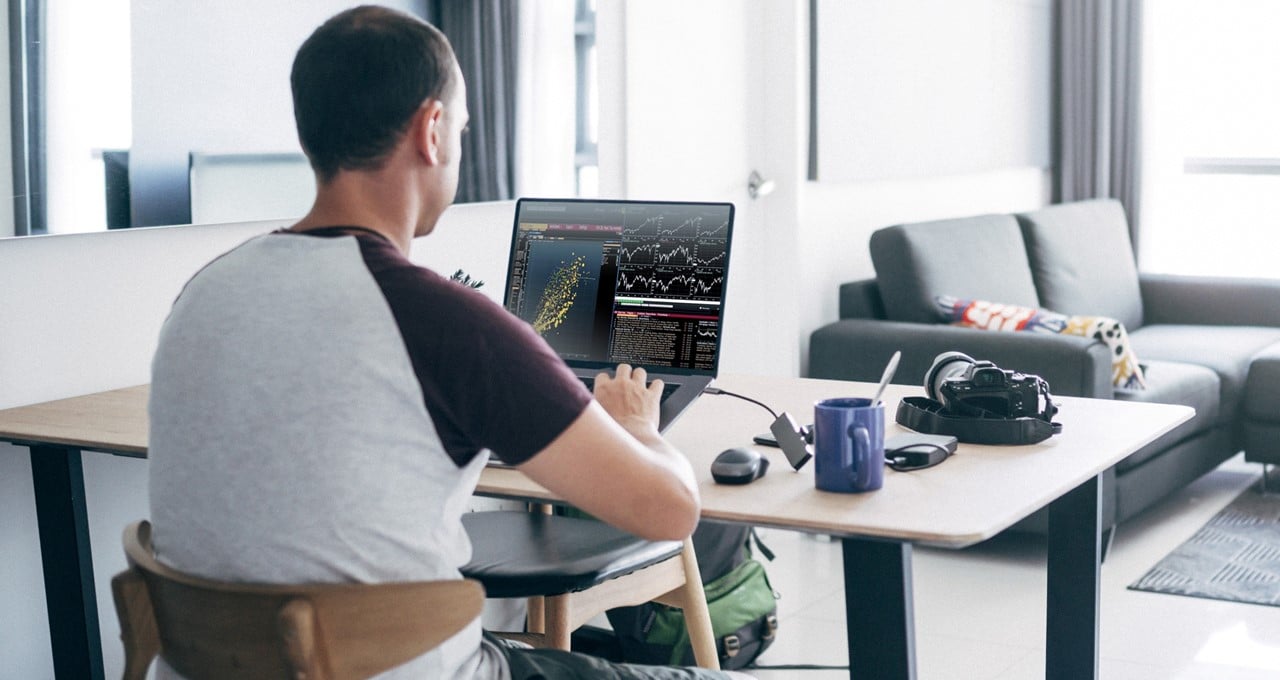With so many people working from home amid the COVID-19 outbreak, staying productive can be challenging.
At NVIDIA, some of us have RTX laptops and remote-working capabilities powered by our virtual GPU software via on-prem servers and the cloud. To help support the many other businesses with GPUs in their servers, we recently made vGPU licenses free for up to 500 users for 90 days to explore their virtualization options.
But many still require access to physical Quadro desktop workstations due to specific hardware configurations or data requirements. And we know this situation is hardly unique.
Many designers, engineers, artists and architects have Quadro RTX mobile workstations that are on par with their desktop counterparts, which helps them stay productive anywhere. However, a vast number of professionals don’t have access to their office-based workstations — with multiple high-end GPUs, large memory and storage, as well as applications and data.
These workstations are critical for keeping everything from family firms to multinational corporations going. And this has forced IT teams to explore different ways to address the challenges of working from home by connecting remotely to an office workstation.
Getting Started: Tools for Remote Connections
The list below shows several publicly available remote-working tools that are helpful to get going quickly. For details on features and licensing, contact the respective providers.
- HP ZCentral Remote Boost
- LogMeIn
- Microsoft Remote Desktop
- NoMachine
- Splashtop
- TeamViewer
- TGX Remote Desktop
- ThinLinc
Managing Access, Drivers and Reboots
Once you’re up and running, keep these considerations in mind:
Give yourself a safety net when working on a remote system
There are times that your tools can stop working, so it’s a good idea to have a safety net. Always install a VNC server on the machine (https://www.tightvnc.com/, https://www.realvnc.com/en/ or others) no matter what remote access tool you use. It’s also a good idea to enable Access to Microsoft Remote Desktop as another option. These run quietly in the background, but are ready if you need them in an emergency
Updating your driver remotely
We recommend you use a VNC connection to upgrade your drivers. Changing the driver often changes the parts the driver the remote access tools are using, so you often lose the connection. VNC doesn’t connect into the driver at a low level, so keeps working as the old driver is changed out to the new. Once the driver is updated, you can go back to your other remote access tools.
Rebooting your machine remotely
Normally you can reboot with the windows menus. Give the system a few minutes to restart and then log back in. If your main remote-working tools have stopped functioning, try a VNC connection. You can also restart from a PowerShell Window or command prompt from your local machine with the command: shutdown /r /t 0 /m \\[machine-name]
App-Specific Resources
Several software makers with applications for professionals working in the manufacturing, architecture, and media and entertainment industries have provided instructions on using their applications from home. Here are links to a few recent articles:
- Altair Blog: Combating Global Concerns Through Responsiveness, Support, and Technology Access
- Autodesk News: How Autodesk is helping customers and employees impacted by COVID-19
- Dassault Systems: Business Must Go On, Smart Working Safe Working on the Cloud
- Helping You Stay Connected with Autodesk BIM 360 Design
- PTC Blog: PTC’s Commitment to You, Our Customers, During COVID-19
- Siemens Blog: NX Deployment options in a Virtual Working World
- SOLIDWORKS Blog: Office Closed due to coronavirus? Here’s how to use SOLIDWORKS at home
- Teradici Blog: Work-from-Home options for Standalone Computers
- Virtualization of ArcGIS from the Cloud and On-Premise Platforms
- VMware blog: Supporting a Rich User Experience for Remote Employees with VMware and NVIDIA
- Working from Home with ArchiCAD
Where to Get Help
Given the inherent variability in working from home, there’s no one-size-fits-all solution. If you run into technical issues and have questions, feel free to contact us at desktop-remoting@nvidia.com. We’ll do our best to help.
Learn more about how you can telecommute or work from home with NVIDIA.
